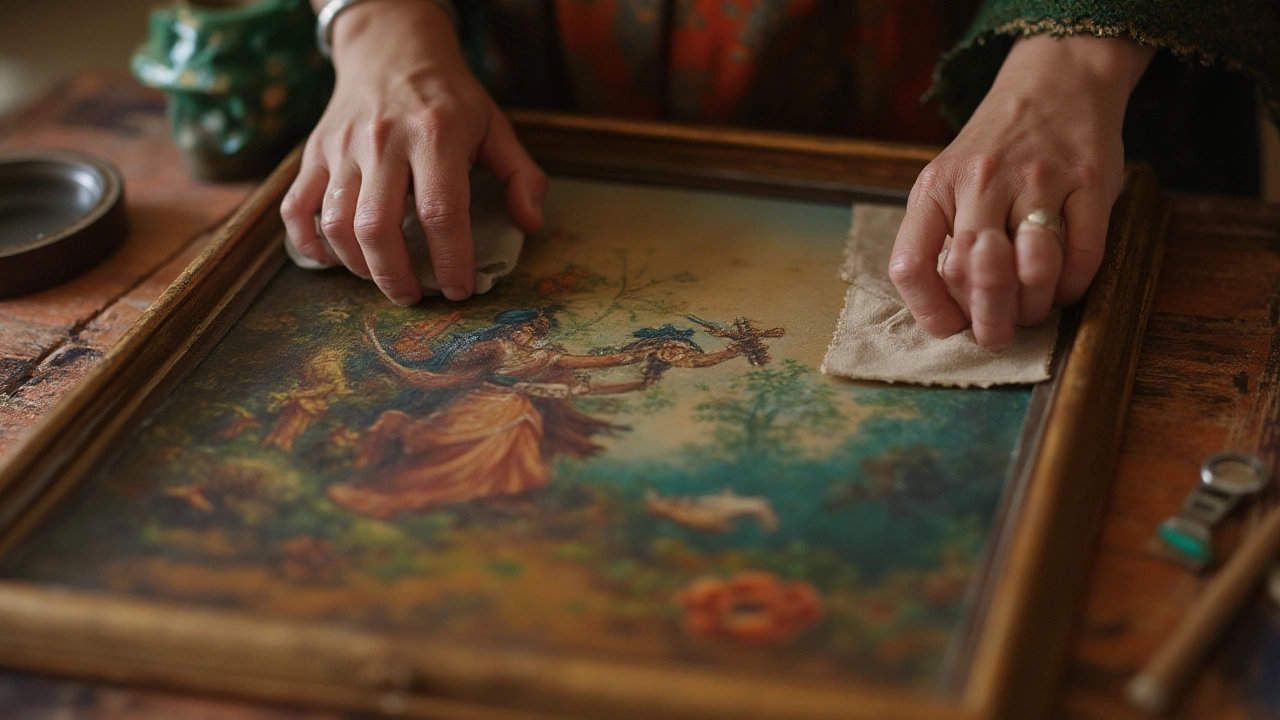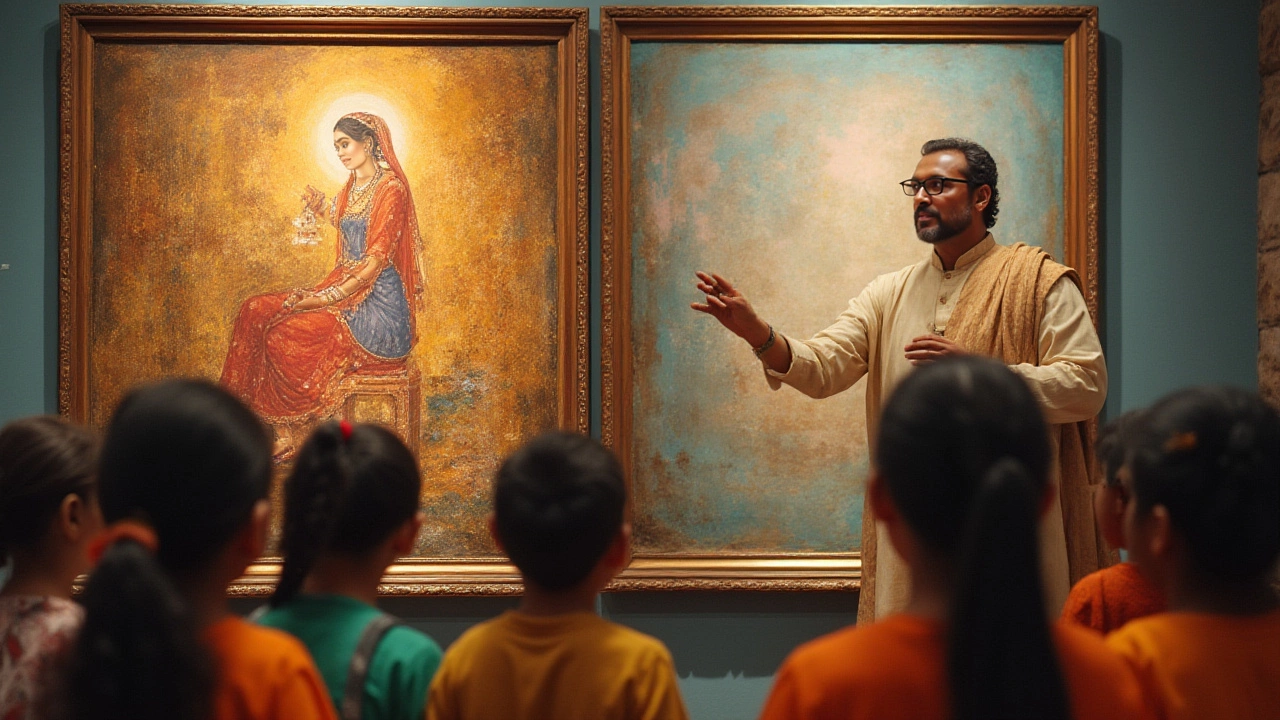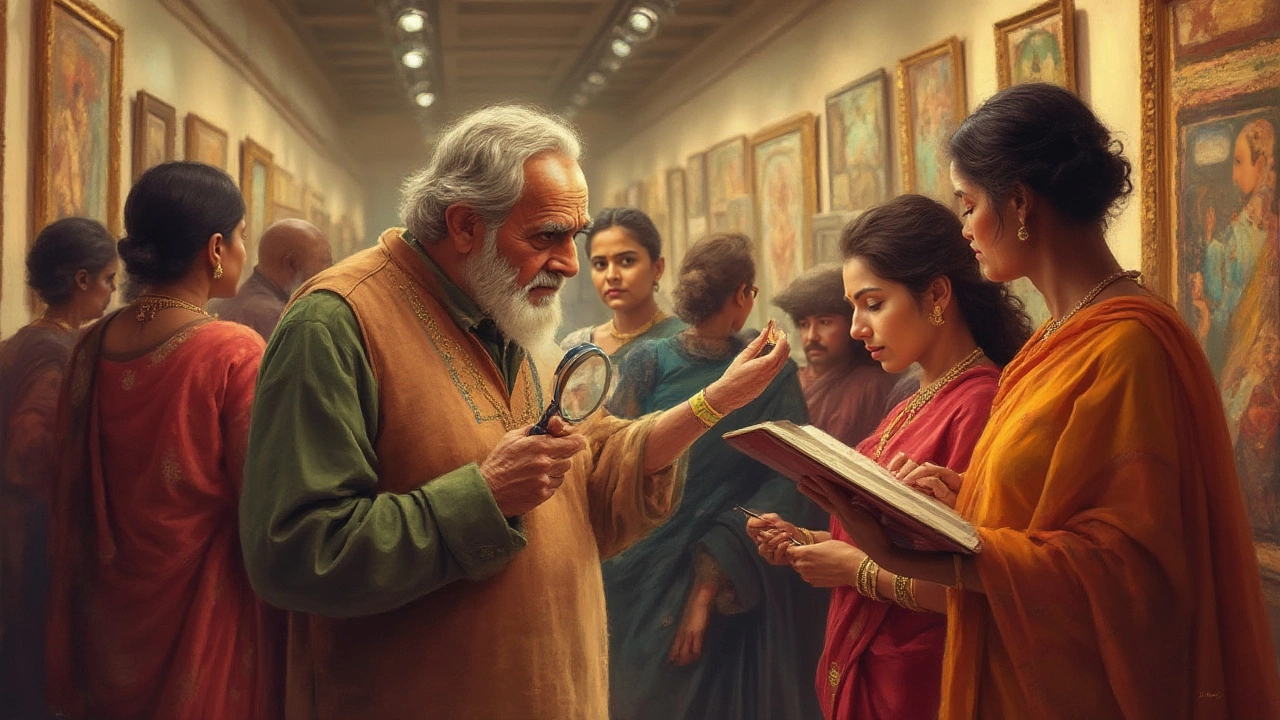Imagine standing in front of a stunning painting, heart pounding, wondering—am I in the presence of a master’s touch or just another convincing fake? The art world is full of stories where even the so-called experts got it wrong. That makes verifying the authenticity of a painting feel a bit like detective work—sometimes even like catching a magician’s sleight of hand. This isn’t just an issue for museums or deep-pocketed collectors; even casual art lovers, people looking to decorate their homes, or proud parents hoping to pass down a family treasure want to know if what they own is the genuine article. With forgeries swirling around auctions and markets, spotting real from replica has become a critical skill—and it’s not as intimidating as it sounds.
The Basics: What Makes a Painting "Original"?
People often toss the word ‘original’ around when talking about art, but what actually counts as an original painting? Simply put, it means the piece was made by the artist’s own hands, not mass-produced, traced, or copied by someone else. The tiniest details—from brush strokes to base material—carry little clues about a piece’s heritage. Originals aren’t just about paint on canvas; sometimes the entire composition, even the flaws, tell a story that’s impossible to completely fake.
Counterfeiters go to wild lengths to mimic these features. They’ll use old canvases, mix up paint based on historical recipes, or even fake signatures. That’s why understanding what to look for is essential. Originals tend to have a clear ‘life’—sometimes you’ll notice uneven layers, little blobs, or unique textures, much like how nobody’s handwriting is exactly the same every time. Even the back of the canvas can be revealing, often showing notes, dates, or peculiarities that you wouldn’t find on a mass-printed reproduction.
When you look at famous works, like those by Raja Ravi Varma or Amrita Sher-Gil, museums sometimes keep meticulous documents, called provenance records, tracing every owner the painting ever had. This paper trail isn’t just paperwork; it adds real trust to an artwork’s status. In the world of Indian art, families have been known to pass paintings across generations, but without proper historical records, proving authenticity can get complicated fast. That’s where the finer details—materials, construction, history—take center stage and provide hope to honest buyers.
Galleries often use high-res magnifiers to analyze surfaces. A print will have a dot matrix or grid pattern (think of a newspaper photo up close) while an original reveals distinct, sometimes messy, brush strokes. Infrared cameras help detect touch-ups—a favorite trick forgers use to “improve” or “age” a piece. The clear difference is that original art usually feels alive under scrutiny, unpredictable and vivid, while fakes are uniform and too-perfect.
Expert Tools and Methods to Spot the Real Thing
While it’s handy to trust your gut, there’s a little science—and a pinch of old-school craftsmanship—involved in authentication these days. Start with the basics: gently shining a flashlight across the surface. Originals have paint that sits or stands on the canvas. Those textures and ridges? They can’t be replicated by a simple scanner or printer. Prints, even the expensive ones, just look flat when examined from an angle.
Signature checking is another classic move, but watch out—skilled forgers are deadly with a brush. An original signature often embeds itself into the paint (sometimes mixed into the strokes), while a fake one feels awkward or recently added. Try comparing it with known authentic works; differences jump out when you line them up side by side.
Under UV light, newer paint lights up in a bright way, while older layers don’t glow the same. This trick reveals newer repairs or forgery attempts. For oil paintings, experts might even do paint sampling—a microscopic scrape from the edge analyzed in a lab. Pigments, binding agents, and varnishes from old times aren’t easy to find or replicate. Some renowned labs, like the National Research Laboratory for Conservation of Cultural Property in Lucknow, specialize in this. Here’s a quick rundown of common authentication tricks:
- Provenance research: Tracing ownership history and publication records (old exhibition catalogs, letters, etc.).
- Technical analysis: Looking at X-rays, infrared, and UV pictures to reveal underdrawings or alterations.
- Material study: Examining canvas, wood, or paper for age and region (using radiocarbon dating when possible).
- Pigment analysis: Checking if pigments or binders existed in the claimed era.
- Microscopy: Observing how paint sits on fibers or surface, looking for hand-done quirks that printers can’t mimic.
Even after all this, forgers get smarter, so the detective work keeps evolving. There’s a reason some forgeries have fooled even seasoned specialists for years, only to get exposed after minute details—like the wrong type of oil in the varnish—are noticed during routine testing. And yet, a painting’s story isn’t just in the science. There’s a human touch, a feeling that can’t be bottled or baked in an oven, and that’s often what an experienced art lover zeroes in on.

Tricks and Tips for Checking Paintings at Home
You don’t need to own a museum to play art detective. Plenty of quick, practical tips help weed out most fakes right at home, before you shell out big bucks or pass that painting down to your kids. First off, the easiest trick is the touch test—though always with clean hands or gloves. You might notice texture differences. With originals, brush strokes feel real, while prints or reproductions are smooth, cold, and sometimes even shiny due to a protective film.
- Flashlight Test: Hold a beam across the surface. Raised paint signals original oils or acrylics; pure flatness hints it’s a print.
- Magnifying Glass: Get in close—see any dots or grids? Prints (even pricey giclées) produce patterns. Originals don’t.
- Back of the Canvas: Originals show wear, aging, and sometimes side notes or old staples. Reproductions look tidier, newer.
- Frame Quality: Old, heavy wood frames (with scratches, not faux-damage) suggest age. But don’t be fooled—some sellers pair old frames with new paintings to fool buyers.
- Signatures: Run your finger—do you feel indented or raised lines? That’s good. Printed sigs just glide under your hand.
If you’re shopping online, ask sellers for high-resolution close-ups and images of the back and signature area. Look for certificates of authenticity with references to recognized agencies or art historians—be wary of generic ones. Sites like Art Loss Register can help check if a piece is involved in any disputes. Some reputable Indian auction houses, like Saffronart and AstaGuru, publish detailed condition reports and provenance notes. When in doubt, it always pays to get a neutral, third-party opinion. Maybe a local museum curator, art professor, or someone from the Lalit Kala Akademi can give you honest feedback for a small fee.
Kids are involved too—my own son, Kanishk, loves playing art detective with his little magnifier. He spots fingerprint smudges and bits of stray hair left behind by the painter. These details, so ordinary, often tell the realest story. If you have older family paintings, handle them with respect; sometimes, family history itself becomes the strongest layer of authentication when the formal paperwork is missing.
When to Consider Professional Art Authentication
Sometimes, the mysteries in this field outpace even the best home detective tools. If you’re dealing with something valuable or something that might be historic, don’t risk a DIY blunder. Getting a professional authentication can cost you, but it beats a nasty surprise later. Authenticators, often connected to major museums or conservation labs, use sophisticated equipment many of us can’t access—think high-powered microscopes, radiographic scanning, big chemical labs. They’ll look beyond the face value and get into paint composition, under-layer sketches, or even woodworm holes.
Typically, experts give you a thorough report—think Jane Austen for paintings—covering what materials were used, brushwork analysis, signature comparison, and any oddities. You get actual lab results: paint dating (using techniques like FTIR, XRF, or Raman spectroscopy), documentation cross-checks, and condition analysis. If an artwork’s value goes above a certain amount—say, what you’d pay for a small car—it’s almost reckless not to have these papers when buying, selling, or insuring.
The art world has witnessed epic blunders. In 2011, a set of works once attributed to great masters at a London gallery turned out to be expert fakes. On the other hand, an ignored portrait from a Kolkata home was recently authenticated as a long-lost Jamini Roy—instantly making headlines and changing family fortunes. Here’s a simple breakdown:
| Authentication Method | What It Detects | Typical Cost (2025) |
|---|---|---|
| Provenance Research | Paper trail, historical ownership | ₹5,000 – ₹50,000 |
| Pigment Analysis | Age and origin of materials | ₹15,000 – ₹100,000 |
| Technical Imaging | Alterations, underdrawings, repairs | ₹10,000 – ₹60,000 |
| Expert Appraisal | Stylistic, historical check | ₹2,000 – ₹25,000 |
Authentication, when done right, often raises a painting’s value and prestige. Even if you just love the art for its look, knowing it’s an original adds a layer of joy and pride that a mere copy can’t rival. And hey, it might just inspire the next generation of budding artists in the family, like Kanishk in my home, to create their own masterpieces with lasting value.

Red Flags and Famous Forgeries: Cautionary Tales
The stories are endless—master forger Han van Meegeren’s fake Vermeers tricked top Dutch museums for years, while Indian markets see regular stings where even modern painters’ works are expertly copied and misrepresented. The first red flag? If it seems too perfect or too cheap to be true, it probably is.
Watch out for rushed sellers and pushy dealers who want quick cash or offer only vague details. Another giveaway: inconsistent signatures, noticeably newer or clashing paint colors, or odd canvas sizes not typical for the supposed artist’s period. Fast fashion applies to art too—mass-produced canvases from factories, sometimes even pre-aged or artificially “cracked,” have flooded tourist areas and online shops. If you see identical paintings over and over at different stalls, that’s another big sign you’re facing a copy operation.
There’s no shortage of heartbreak in this game. In the last five years, Indian galleries have faced scandals where buyers spent much for what turned out to be clever knockoffs, sometimes with made-up “dealer certificates.” Once exposed, values plummet, insurance refuses to cover, and owners are left with nothing but regret. Some people accept forgeries accidentally, but others get taken in by wild stories and emotional appeals—“it was rescued from a palace, only one left!” Don’t let pressure cloud your judgment.
For added confidence, collect stories and family anecdotes along with paperwork. Digital registries are popping up, letting owners register paintings, upload close-ups, and submit for crowd analysis before making high-stake purchases.
Spotting an original painting isn’t just about tools or science. It’s about patience, curiosity, and connecting small facts—some hiding in plain sight, others tucked beneath a layer of paint. With forgeries growing slicker and more available, remember: trust your senses, do your homework, and never be shy to ask questions. Sometimes what’s seen by a sharp, honest eye, guided by a hint of skepticism, protects generations of memories—and maybe leaves a little space on your wall for real art that truly matters.
